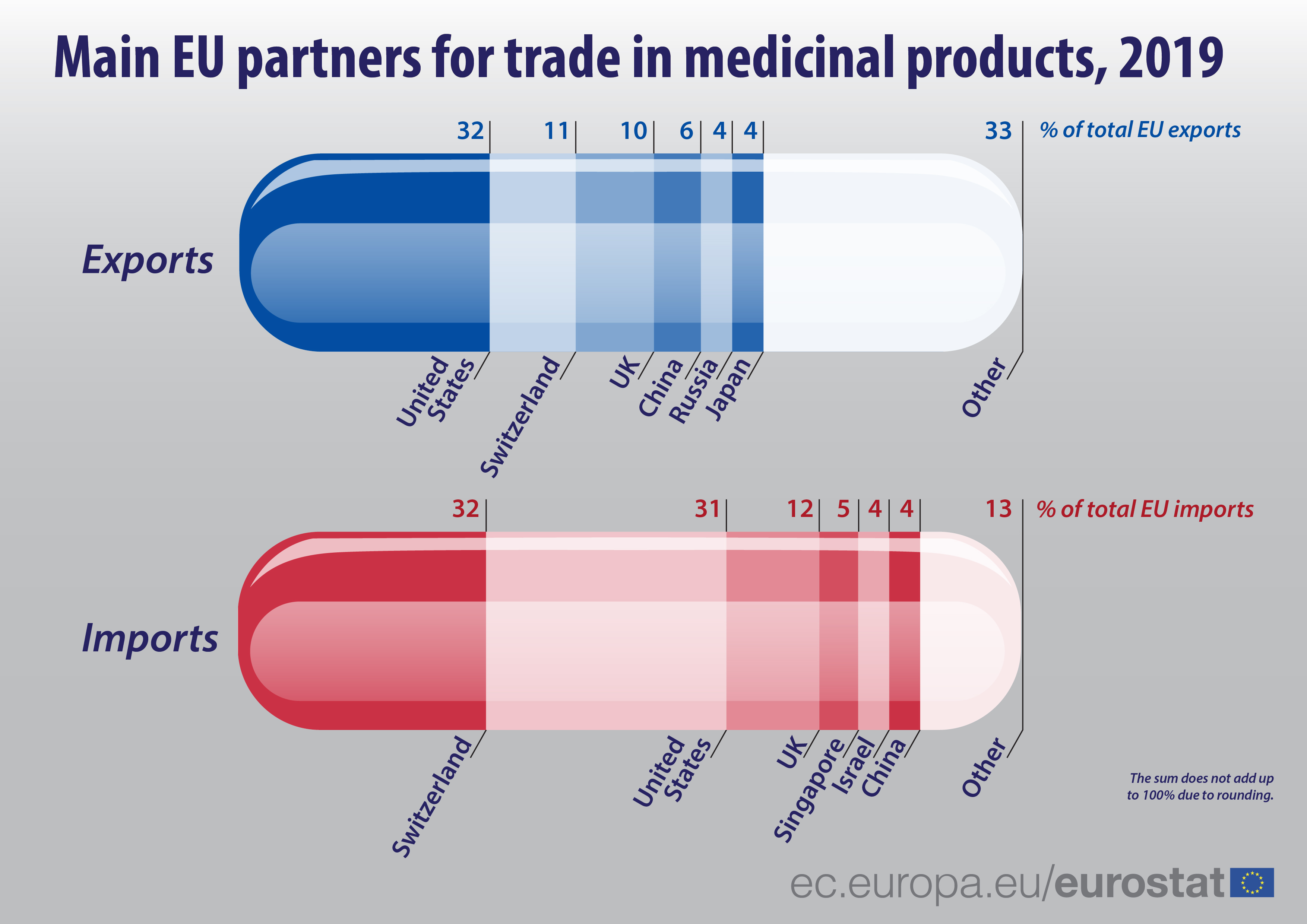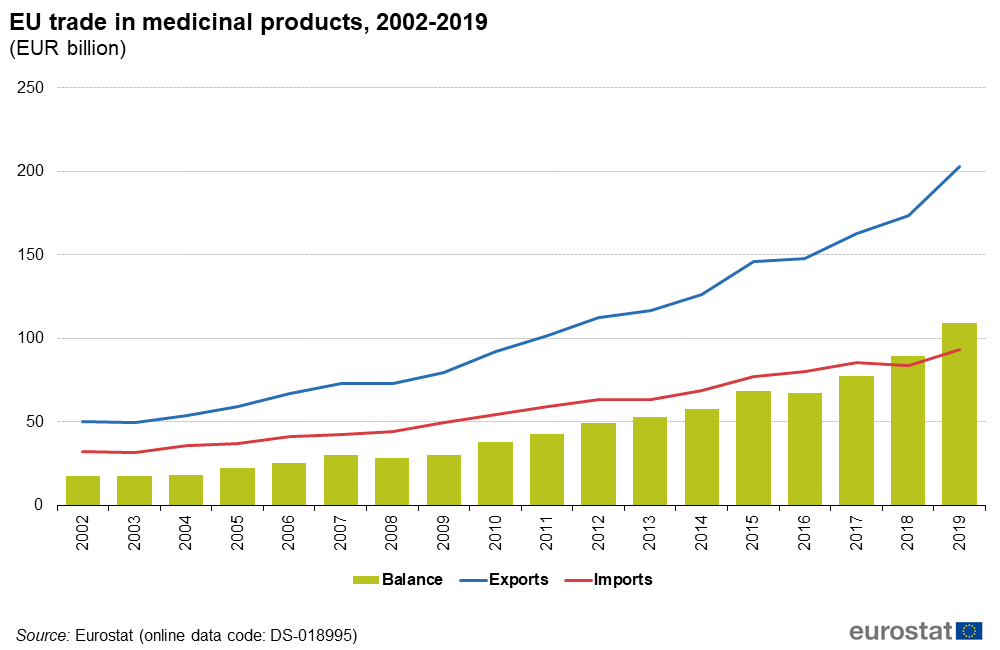In these times of Corona virus, it might be interesting to know more about EU trade in medicinal products. The main destination for EU exports of medicinal and pharmaceutical products in 2019 was the United States (accounting for 32% of EU exports of these products), followed by Switzerland (11%), the United Kingdom (10%), China (6%), Russia and Japan (both 4%). Imports of medicinal and pharmaceutical products into the EU were from Switzerland (accounting for 32% of EU imports of these products), followed by the United States (31%) and the United Kingdom (12%).
Between 2002 and 2019 the trade in medicinal and pharmaceutical products with the United States and Switzerland increased. During the whole period, the EU has had a trade surplus with the United States and a trade deficit with Switzerland.
Among the Member States, the Netherlands was the largest importer of medicinal and pharmaceutical products (€19 billion) in 2019, followed by Belgium and Germany (both €18 billion). Germany was the largest exporter of medicinal and pharmaceutical products (€47 billion), followed by Ireland (€32 billion), Belgium (€28 billion), the Netherlands (€22 billion), France (€17 billion) and Italy (€16 billion).
Evolution of trade in medicinal products
EU exports and imports of medicinal and pharmaceutical products grew almost every year between 2002 and 2019, reaching €203 billion and €93 billion respectively in 2019. With exports growing more than imports, the trade balance increased from a surplus of €18 billion in 2002 to a record high of €109 billion in 2019.
Source dataset: DS-018995
Notes:
- The European Union (EU) includes 27 EU Member States. The United Kingdom left the European Union on 31 January 2020. Further information is published here.
- Trade data: Due to quasi-transit trade, the adding of intra-EU trade and extra-EU trade may lead to double counting. An example of this would be medicinal products imported from the United States via the Netherlands, where they are cleared by customs for free circulation, before being dispatched to Germany. This would lead to the same medicinal products being counted as imports by both the Netherlands and Germany. More precisely, they would appear in the Netherlands' extra-EU imports from the United States and intra-EU exports to Germany and in Germany's intra-EU imports from the Netherlands.
For further information:
- Statistics Explained article International trade in medicinal and pharmaceutical products
- Overview of statistics on international trade in goods
To contact us, please visit our User Support page.
For press queries, please contact our Media Support.



